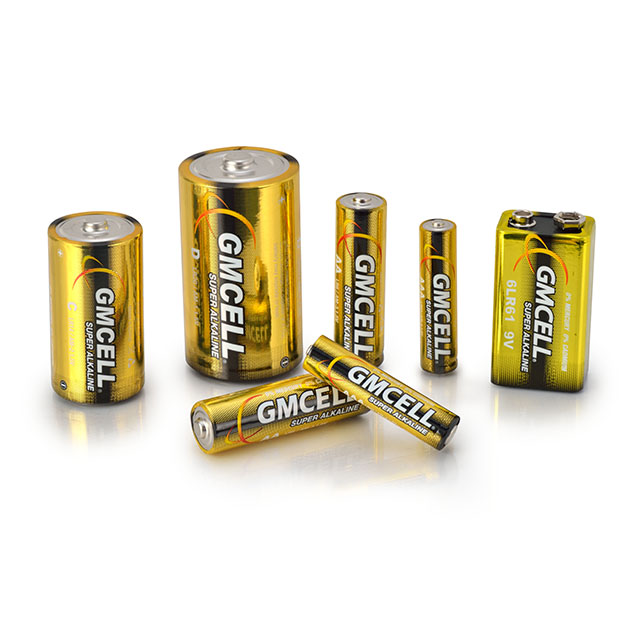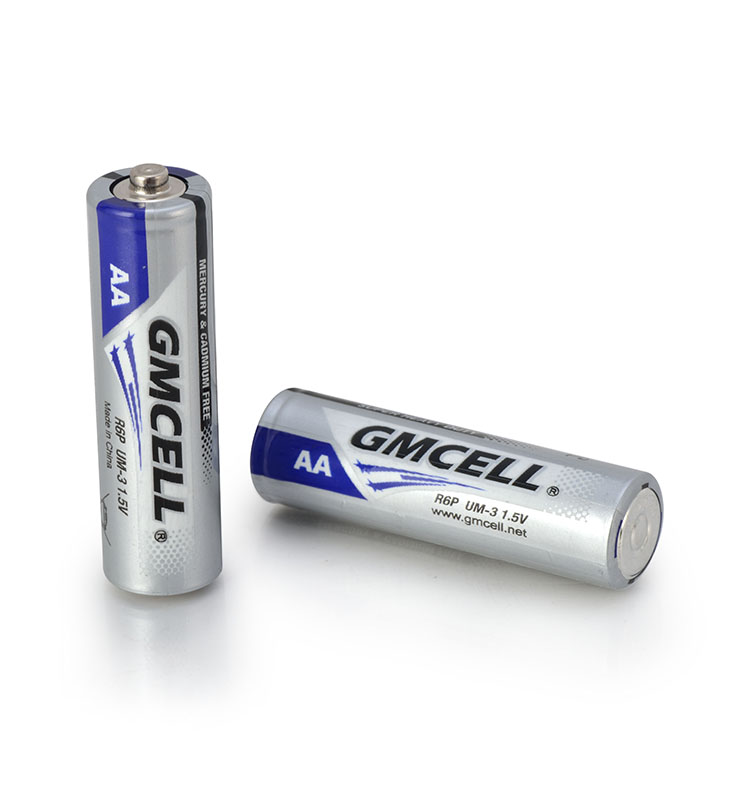Comparison of Performance between Carbon-Zinc Batteries and Alkaline Batteries
In today’s energy-driven era, batteries, as the core components of portable power sources, are widely used in various electronic devices. Carbon-zinc batteries and alkaline batteries, as the most common types of dry batteries, each have unique technical characteristics and performance. This article will conduct an in-depth comparison of the performance of the two types of batteries, and provide a detailed analysis and English translation of key technical parameters, enabling readers to fully understand their differences and application scenarios.
I. Basic Principles of Batteries
(1) Carbon-Zinc Batteries
Carbon-zinc batteries use manganese dioxide as the positive electrode, zinc as the negative electrode, and an aqueous solution of ammonium chloride or zinc chloride as the electrolyte. Their working principle is based on redox reactions. During discharge, zinc at the negative electrode undergoes an oxidation reaction and loses electrons. These electrons flow through the external circuit to the positive electrode, where manganese dioxide undergoes a reduction reaction. At the same time, the migration of ions in the electrolyte solution maintains charge balance.
(2) Alkaline Batteries
Alkaline batteries also use zinc as the negative electrode and manganese dioxide as the positive electrode, but they use an aqueous solution of potassium hydroxide as the alkaline electrolyte. The alkaline environment changes the reaction rate and pathway of the internal chemical reactions of the battery. Compared with carbon-zinc batteries, the redox reactions in alkaline batteries are more efficient, enabling them to provide more stable and lasting power output.
II. Performance Comparison
(1) Voltage
The nominal voltage of carbon-zinc batteries is usually 1.5V. When a new battery is first used, the actual voltage may be slightly higher, around 1.6V – 1.7V. As the chemical reaction proceeds during use, the voltage gradually decreases. When the voltage drops to about 0.9V, the battery is basically exhausted and can no longer provide effective power for most devices.
The nominal voltage of alkaline batteries is also 1.5V, and the initial voltage of a new battery is also around 1.6V – 1.7V. However, the advantage of alkaline batteries lies in the fact that during the entire discharge process, their voltage drops more gradually. Even after more than 80% of the power is consumed, the voltage can still remain above 1.2V, providing more stable power supply for devices.
(2) Capacity
Battery capacity is usually measured in milliampere-hours (mAh), representing the amount of electric charge that the battery can release. The capacity of carbon-zinc batteries is relatively low. The capacity of common AA-sized carbon-zinc batteries is generally between 500mAh – 800mAh. This is due to the characteristics of their electrolyte and electrode materials, which limit the total amount of substances involved in the chemical reaction and the reaction efficiency.
The capacity of alkaline batteries is much higher than that of carbon-zinc batteries. The capacity of AA-sized alkaline batteries can reach 2000mAh – 3000mAh. The alkaline electrolyte not only improves the activity of the electrode materials but also optimizes the ionic conduction efficiency, enabling alkaline batteries to store and release more electrical energy, making them suitable for high-energy-consuming devices.
(3) Internal Resistance
Internal resistance is an important parameter for measuring the self-loss of a battery during the discharge process. The internal resistance of carbon-zinc batteries is relatively high, approximately 0.1Ω – 0.3Ω. High internal resistance will lead to a large voltage drop inside the battery during high-current discharge, causing energy loss. Therefore, carbon-zinc batteries are not suitable for devices that require high-current power supply.
The internal resistance of alkaline batteries is relatively low, about 0.05Ω – 0.1Ω. The low internal resistance characteristic enables alkaline batteries to maintain a high output voltage during high-current discharge, reducing energy loss. They are more suitable for driving high-power devices such as digital cameras and electric toys.
(4) Service Life
The service life of carbon-zinc batteries is relatively short. After being stored at room temperature for about 1 – 2 years, there will be a significant decrease in power. Even when not in use, self-discharge occurs. In high-temperature and high-humidity environments, carbon-zinc batteries may also experience leakage problems, corroding the devices.
Alkaline batteries have a longer shelf life and can be stored at room temperature for 5 – 10 years with a relatively low self-discharge rate. In addition, the structural design and electrolyte characteristics of alkaline batteries make them more resistant to leakage, providing longer and more stable power support for devices.
(5) Cost and Environmental Protection
The manufacturing cost of carbon-zinc batteries is relatively low, and their market price is also relatively cheap. They are suitable for simple devices with low power requirements and cost-sensitive applications, such as remote controls and clocks. However, carbon-zinc batteries contain heavy metals such as mercury. If not properly disposed of after being discarded, they will cause pollution to the environment.
The production cost of alkaline batteries is relatively high, and their selling price is also relatively expensive. However, alkaline batteries are mercury-free and more environmentally friendly. Moreover, due to their high capacity and long service life, the cost per unit of electric energy may be lower than that of carbon-zinc batteries in the long-term use, making them more suitable for high-energy-consuming devices.
III. Comparison Table of Technical Parameters
| Technical Parameters | Carbon-Zinc Battery | Alkaline Battery |
| Nominal Voltage | 1.5V | 1.5V |
| Initial Voltage | 1.6V – 1.7V | 1.6V – 1.7V |
| Cut-off Voltage | Approximately 0.9V | Approximately 0.9V |
| Capacity (AA size) | 500mAh – 800mAh | 2000mAh – 3000mAh |
| Internal Resistance | 0.1Ω – 0.3Ω | 0.05Ω – 0.1Ω |
| Storage Life | 1 – 2 years | 5 – 10 years |
| Cost | Lower | Higher |
| Environmental Friendliness | Contains mercury, high pollution risk | Mercury-free, more environmentally friendly |
IV. Conclusion
Carbon-zinc batteries and alkaline batteries each have their own advantages and disadvantages in terms of performance. Carbon-zinc batteries are low in cost but have small capacity, short service life, and high internal resistance. Although alkaline batteries are relatively more expensive, they have the advantages of high capacity, long service life, low internal resistance, and greater environmental friendliness. In practical applications, users should reasonably select the appropriate type of battery according to the power requirements of the devices, the frequency of use, as well as cost and environmental protection factors to achieve the best usage effect and economic benefits.
Post time: May-23-2025





